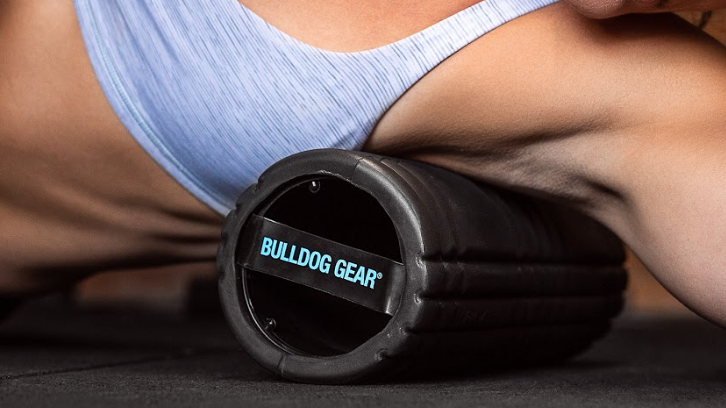|
05/05/2022 | Andrew Tracey Andrew Tracey is a long time collaborator with Bulldog Gear. A coach, writer and current fitness editor of Men’s Health Magazine, he has been in and around the fitness industry for the past 16 years. Having enjoyed and endured a number of disciplines from endurance racing, to strongman, to Crossfit AT enjoys getting neck deep in the practice just as much as the theory. |
Versus the standard western diet, a diet higher in protein is nearly always correlated with better body composition, health markers and performance. In fact, when comparing dietary strategies for weight loss, the two factors that are almost always equated for are- calories and protein content, just to shine a light on how important this macronutrient is.
But protein isn’t just vital for muscle growth and recovery (and, well- pretty much everything else your body does), it also works to keep you satiated when calories are lower, has a higher ‘thermic effect’ (meaning your body burns more calories utilising protein than other macronutrients) and can even facilitate muscle growth in a caloric deficit.
To paraphrase Ron Burgundy ‘Protein is kind of a big a deal.’
It’s understandably frustrating then, that you pretty much can’t have too much protein, yet it can be difficult to even get enough.
If you’re struggling to hit your protein goals, or just want some sure fire ways to guarantee you’re getting enough, experiment with these five strategies to find one that fits your lifestyle.
PLAN EACH MEAL WITH A ‘PROTEIN FIRST’ APPROACH
Spaghetti Bolognese, macaroni cheese, potato surprise… The ‘standard western diet’ doesn’t just take a carbohydrate heavy approach, it takes a carbohydrates first approach.
Whilst there’s nothing inherently wrong with that, letting protein play second fiddle could be standing in the way of you optimising your intake.
The quick fix? Plan your meals and snacks with a ‘protein first’ approach.
When planning your meals throughout the day, begin with 20-40g of protein then build the rest of your meal around that source. It may sound ridiculously obvious, but how many of us actually approach nutrition this way? Especially when it comes to snacks- it’s incredibly easy to be lulled into picking up carbohydrate and fat heavy snacks between meals, especially if you’re on the go and seeking convenience.
Focus on seeking out a significant hit of protein as a priority each and every time you eat, especially between meals, and you’ll be hitting those big numbers, effortlessly.
GRAZE ON PROTEIN
You may be playing spot the difference between ‘grazing on protein’ and the advice above, but bear with me here.
Even when utilising a ‘protein first’ approach it’s common for people to still struggle with hitting their protein goal, simply because their appetite becomes a limiting factor. Appetite is a very subjective, relative phenomenon that doesn’t just very (wildly) from person to person, but can change from day to day. Trying to shovel in what feels like an impossible amount of protein each day can feel like a chore at best, and can have major implications for your relationship with food at worst.
One of the principal USP’s of protein is it’s ability to keep you feeling fuller, for longer. For many, especially those trying to hit higher calorie targets, this can be a hindrance, and one protein-packed, appetite quashing meal can quickly lead to them missing the next few, making high protein meals and snacks a bit of a double-edged sword.
Relieve the pressure by having a handful of ‘go-to’ protein snacks that you can graze on in small quantities between meals. The real trick here is in never eating so much that your appetite is effected heading into your next meal.
Have a rough idea of how much protein you’re going to consume in your planned meals, then make up the rest in lean, high protein food sources.
For example, if your goal is to hit 160g of protein, and you know you’re going to nail 100g over breakfast, lunch and dinner- make up 60g of protein from chicken sausages, bag them up and tuck into them throughout the day, aiming to finish them all by the end of the day without eating so much in a single sitting that your appetite is diminished and your other meals are impacted.
POST-WORKOUT SHAKE
Want to know what we think about the ‘anabolic window’? Here’s something we prepared earlier-
Jokes aside, whilst there’s nothing inherently magical about consuming a protein shake directly following your workout, it could well be a good practice to develop on your quest for gains.
One of the easiest ways to develop a habit is to ‘stack’ it on top of a pre-existing habit, using the established action as a ‘trigger’. If you’re training regularly but still struggling with your protein intake, making a post workout shake part of your daily routine is a low drag way to get 30-40 additional grams of protein without having to think too hard.
‘First we make our habits, then our habits make us.’ -Frederick Langbridge
BEDTIME SNACKS
Playing ‘catch-up’ at the end of the day might not seem like the smartest strategy, but if we lean into the idea of ‘habit stacking’ that we referenced above we can make a simple reframe from ‘catching up’ to ‘cashing out’.
You’re going to head to bed of a night; as far as ‘habits’ go, sleeping is up there with breathing. So using your nighttime wind down as a chance to reflect on the amount of protein you’ve consumed throughout the day and apportion yourself a bedtime snack reflective of the ‘balance’.
Whilst the quantity ranks sightly above the source, and you could opt for any form of protein here to make up the numbers, there are some proteins that offer some additional nighttime benefits- casein a derivative of milk protein and the cousin of whey, digests more slowly than other sources making it ideal for a long the stint between meals that a good night’s sleep represents.
All dairy products contain casein to some degree, but foods such as cottage cheese are more protein dense making them ideal. Failing that, powdered casein protein can quickly be whipped up into a pudding or a hot chocolate, simply adjust quantities to hit your goal and ‘cash out’ at the end of each day.
THE ALL DAY SHAKE
A remix on ‘graze on protein theme’, this concept was first introduced to me over 15 years ago by a bodybuilder who was responding to my claim that ‘I just can’t eat enough’, he proceeded to tell a 60kg, 17 year old me that I should stop trying to eat enough and just work with the appetite I’ve got, supplementing (ah, that’s why they call it that) the protein I can consume with extra liquid intake to make up the difference.
Again, figure out how much you can realistic get in through whole foods throughout the day, then mix up a protein shake to top up the rest, pour your muscle-building concoction into a large thermos and (to avoid the appetite trap mentioned in point two) sip on it slowly, throughout the day.
You can also use this as an opportunity to rectify any other nutritional deficiencies you may be worried about, adding in vitamins, minerals, creatine or electrolytes in the form of powders or blended foods.



